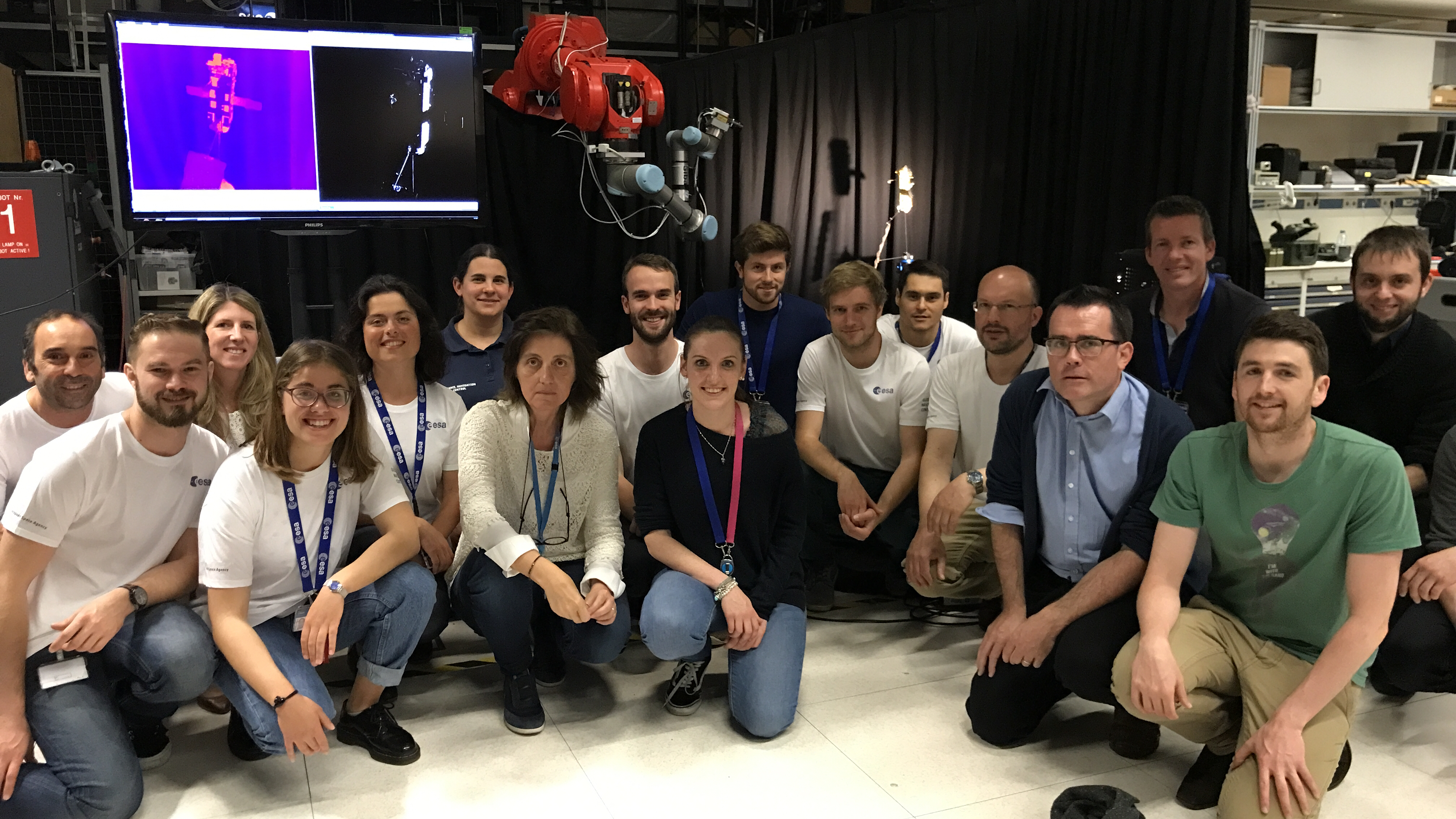Many sections within ESA collaborates actively with Clean Space. In the case of e.Deorbit it is not an easy task for experts in the areas of Robotics and GNC (Guidance, Navigation & Control); the mission is demanding high-performance GNC technologies and it is a true challenge to ensure that the the technologies will be ready for its launch.
The GNC team is working continuously in preparing their facilities to test, validate and verify all the sensors, actuators and controllers necessary to perform this mission.
The interactions between GNC and Robotics and their controllers pose one of the major challenges for the e.Deorbit mission. Thanks to the upgrades in the ESTEC facilities, these interactions will be able to be tested.
In case you don’t know yet what the e.Deorbit mission is, we would suggest you to take 2’45 minutes of your time to watch this cool video. It won’t take you long to grasp the objective and main challenges of the mission.
In order to do relative navigation, synchronized flight and capture an un-cooperative target with the robotic arm, new technologies and methodologies will be required, for instance:
- New image processing methods: in order to chase the debris using the cameras and identify the features of the target
- Relative navigation systems using optical flows
- Infrared and visual cameras will be needed (tracking more than 100 points)
- Cooperative or integrated controllers

The members of the Clean Space team: Luisa Innocenti, Robin Biesbroek, Sara Morales and Andrew Wolahan attended a demonstration about vision-based navigation systems to capture a dead satellite (i.e. ENVISAT). The demo was given using the COMAU robot of the Planetary laboratory in the Erasmus High Bay of ESTEC. Credits: ESA
The demonstration consisted of the simulation of the fly around of a chaser satellite that is approaching a dead satellite (scaled down mock-up of ENVISAT) with the aim of capture it and later de-orbit it.
Two different cameras systems were used: one on the visual spectrum and another one in the thermal infrared spectrum. The cameras were mounted in the same bracket simulating the effect of a multi-spectral navigation camera. The mock-up was fixed and the bracket with the cameras was moving around the satellite. Examples of the images taken by these cameras can be seen in the image below.

The members of the GNC team: Jesus Gil, Manuel Sanchez, Irene Huertas, Olivier Dubois-Matra, Eric Reinthal, Lukas Steindorf, Giordana Bucchioni, and Ozgun Yilmaz complemented the demonstration with a set of brief presentations and an explanatory video of the GNC of the mission. Credits: ESA
The efforts of all the experts collaborating with Clean Space are really appreciated and we would like to thank them for their great job. And of course, a particular thank to the GNC team which took the time to organise this visit!





Discussion: no comments